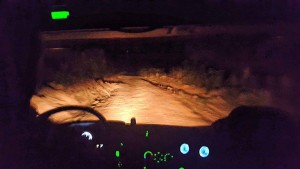For about 6 days Pablo and I had the opportunity to travel with the Barreto’s mobile unit (or carreta) to the “interior” of Brazil. We visited 3 different cities, saw about 390 patients and met/spent time with 5 absolutely amazing people.
So despite the fact that I have lived in 4 different states over my life time, I have always lived in the largest city of each state. Oklahoma City, Seattle, Atlanta, Houston. The smallest city Ive lived in (Atlanta) has about 500,000 habitants…and that is just in Atlanta proper. Doesn’t include all of the small suburbs. Yet on this trip with the carreta, the largest city we saw was 12,000 people. Needless to say, these towns do not have extensive access to specialized medicine, and were extremely grateful.
Each day the carreta attended to 130 patents. 50 patients for pap smears, 40 for skin lesion examinations, and 40 for prostate exams. This is a lot of work in one day, but what’s even crazier is the amount of work done before the carreta arrives. For a city to be able to receive the carreta they must send a head local nurse to Barretos once a year for an orientation/training session. The city must secure a good location, with space for the carreta to park, a room outside the carreta for check in and blood to be drawn. The city must secure all the patients in advance and are responsible for making sure the necessary paperwork has been filled out and the patients are aware that they cannot eat for 5 hours before they get the blood drawn. The city must have food available for the patients for after they have had their blood drawn. The wonderful thing is this food is usually also extended to the carreta staff (which means lots of wonderful Brazilian food for us ! :D).
One of the cities we visited in Mato Grosso. This picture shows the carreta and waiting areas.
Somehow the nurses and coordinators in each city pull off unbelievable feats by organizing these events and taking care of the carreta staff. However, the unsung heroes in this situation definitely have to be the carreta staff. I think Pablo and I agree that we have rarely gotten the chance to meet such kind, selfless, generous, and welcoming people. Their job is extremely draining and yet they manage to always be smiling and super fun to be around. Each trip they take with the carreta lasts somewhere from 30-40 days. That’s AT LEAST one month on the road. Jumping from city to city, hotel to hotel, with long bumpy rides in the tight quarters of the carreta for hours in between. And to top it off, the nurses often have to wake up to travel to the next city at 3:30 am. And all for what? To help make sure people in remote locations get access to cancer prevention methods.

The view outside the carreta at 3:30 am

Pablo and I with the carreta nurses
Potentially the most inspirational of all of the carreta staff is Crueza. It wouldn’t be farfetched to say that carreta system won’t exist without her. She was the original carreta system, having traveled from house to house in different cities with pap smear equipment on a bike. Getting the chance to meet her was an honor. She has personally saved so many lives. After seeing pictures and videos of her on a bike and getting the chance to experience the carreta system as it is now, the transition is awe-striking.
Pablo and I with Crueza!


